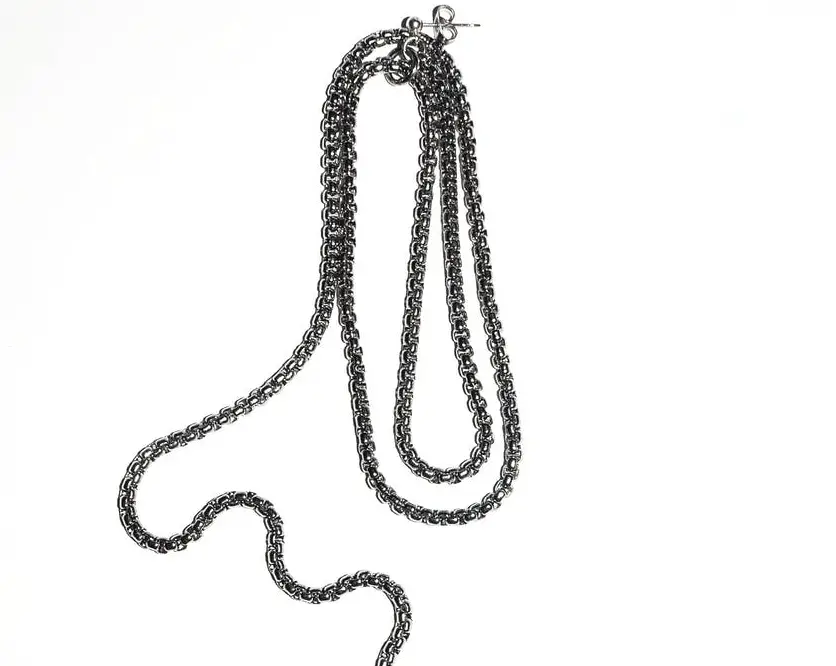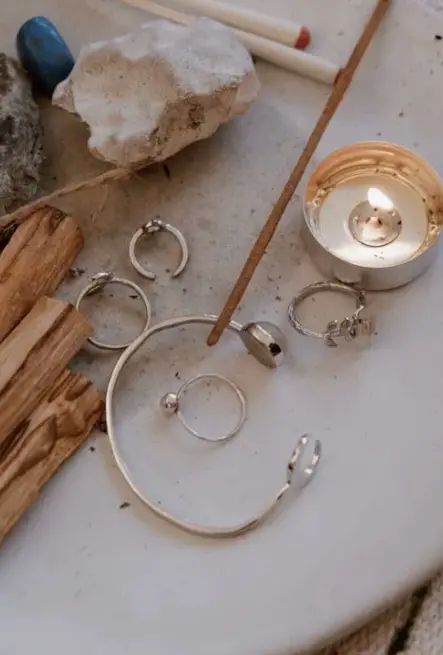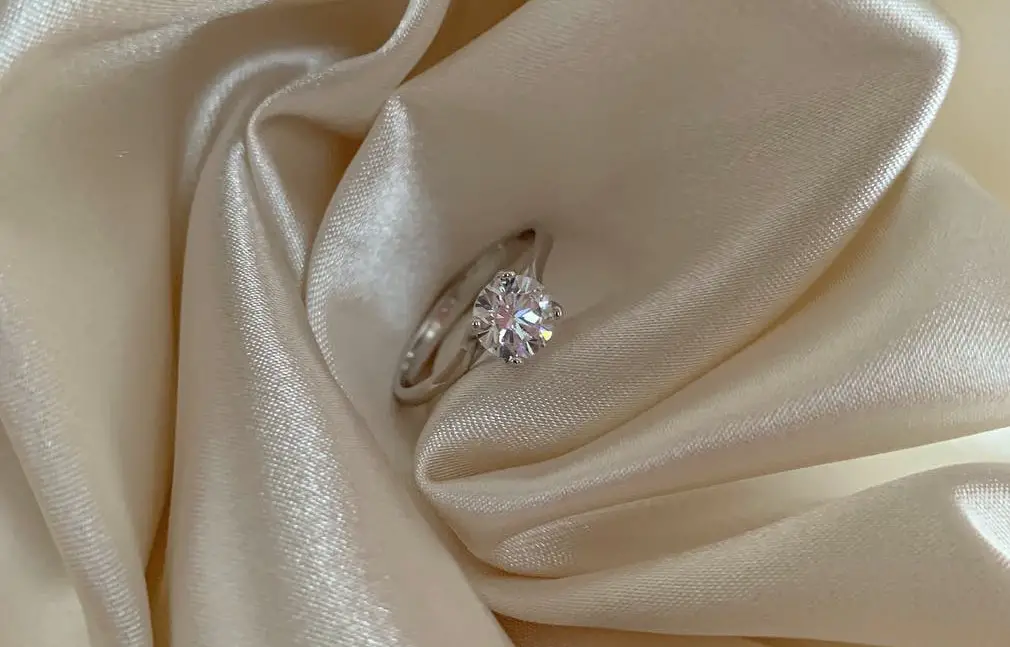Sterling silver and white gold are popular choices for jewellery, each offering unique characteristics that appeal to different tastes and needs.
While both have a similar appearance, they differ significantly in composition, durability, price, maintenance, and hypoallergenic properties.
This guide compares sterling silver and white gold across various factors to help you make an informed choice.
Let's get straight to the point
Sterling silver and white gold are popular choices for jewellery, each with unique benefits. Sterling silver is affordable, hypoallergenic, and has a bright, slightly greyish tone; it’s great for casual and statement pieces but requires regular polishing due to tarnishing.
White gold offers a luxurious, platinum-like look with rhodium plating for durability, making it ideal for bridal and high-contact pieces.
However, it’s more expensive and may need periodic re-plating. Choose sterling silver for affordability and versatility or white gold for durability and high-end appeal.
1. Composition And Structure

Understanding the composition of these metals is essential to appreciate their strengths and weaknesses.
Sterling Silver Composition
- Material: Sterling silver comprises 92.5% pure silver and 7.5% alloy metals—usually copper—to increase durability.
- Colour: This composition gives sterling silver its bright, slightly greyish hue.
- Hallmarks: Sterling silver items should have stamps such as .925, STERLING, or STER, indicating authenticity.
White Gold Composition
- Material: White gold is an alloy, usually made by mixing yellow gold with metals like nickel, silver, or palladium.
- Colour Enhancement: White gold is coated with rhodium to achieve its distinct white sheen, making it appear similar to platinum.
- Karat Grades: The quality of white gold is defined by its karat—14-karat white gold contains 58.3% gold, while 18-karat white gold contains 75% gold.
In summary, White gold has a more valuable and prestigious composition compared to sterling silver, making it the better choice for high-end, luxury jewellery.
2. Durability And Wearability
One of the primary considerations when choosing jewellery is durability—especially for pieces meant for daily wear, such as rings or bracelets.
Durability Of Sterling Silver
- Softness: Sterling silver is softer than white gold, making it more prone to scratches and bends.
- Daily Use: While beautiful, sterling silver may not be ideal for daily wear, particularly for high-contact items like rings.
- Tarnishing: Sterling silver tarnishes over time, particularly when exposed to air, moisture, or chemicals, but can be polished back to its original shine.
Durability Of White Gold
- Strength: White gold is generally more durable due to its alloy composition and rhodium plating.
- Scratch-Resistance: Rhodium plating helps white gold resist scratches better than sterling silver.
- Plating Maintenance: The rhodium layer may wear off over time, requiring periodic re-plating to retain its lustrous appearance.
In summary, White gold is generally more durable, making it a stronger choice for daily wear, particularly in rings and bracelets.
3. Maintenance And Care
Maintenance is critical for any jewellery, as it affects the piece's longevity and appearance.
Maintaining Sterling Silver
- Cleaning Needs: Sterling silver tarnishes require frequent polishing to maintain its shine.
- Exposure Sensitivity: Should be kept away from moisture, chemicals, and chlorine.
- Home Cleaning Options: Sterling silver can often be cleaned using household items like baking soda, vinegar, or lemon juice.
Maintaining White Gold
- Less Frequent Cleaning: White gold, due to its rhodium plating, is less prone to tarnish, so it generally requires less frequent maintenance.
- Replating: The rhodium coating wears off over time, so white gold jewellery may need professional re-plating every few years.
- Everyday Cleaning: Wiping with a soft cloth between professional re-platings keeps it shiny.
In summary, White gold requires less frequent polishing than sterling silver, making it the better option if you prefer low-maintenance jewellery.
4. Cost Comparison
Cost is a crucial factor when purchasing jewellery, often guiding whether to choose sterling silver or white gold.
Cost Of Sterling Silver
- Affordability: Sterling silver is more affordable than white gold, making it an excellent choice for budget-conscious buyers.
- Value: Despite its lower price, sterling silver offers a high-quality appearance and finish.
Cost Of White Gold
- Higher Investment: White gold is generally more expensive due to its gold content and the rhodium plating process.
- Long-Term Value: White gold may hold its value better over time, particularly in higher karats, like 18-karat white gold.
In summary, Sterling silver is better for those who want an affordable yet beautiful metal, while white gold is a good choice for those who want a high-value investment.
5. Hypoallergenic Properties

Sensitivity to metals can be an essential factor for individuals with allergies or sensitive skin.
Hypoallergenic Nature Of Sterling Silver
- Allergy-Friendly: Sterling silver is typically hypoallergenic, especially when alloyed with copper rather than nickel.
- Suitable for Sensitive Skin: It is generally safe for individuals with skin sensitivities.
Hypoallergenic Nature Of White Gold
- Nickel Content: Some white gold alloys contain nickel, which may cause reactions in sensitive individuals.
- Alternative Alloys: Some white gold is alloyed with palladium instead of nickel, making it safer for those with allergies, although often at a higher price.
Sterling Silver is generally the better choice for sensitive skin, though nickel-free white gold options are also available.
6. Appearance And Aesthetic Appeal
Both sterling silver and white gold have an elegant, silvery appearance but differ subtly in tone and lustre.
Appearance Of Sterling Silver
- Bright and Lustrous: Sterling silver has a bright, slightly greyish tone, giving it a distinctive look.
- Versatile: Complements casual and formal attire, making it a popular choice for various jewellery styles.
Appearance Of White Gold
- Cooler Tone: White gold has a whiter, shinier appearance, often similar to platinum, thanks to its rhodium coating.
- High-End Look: The rhodium plating gives white gold a luxury finish that appeals to those seeking a more sophisticated style.
In summary, White gold offers a cooler, more luxurious aesthetic, ideal for formal jewellery, while sterling silver has a versatile, slightly greyish tone that suits both casual and formal wear.
7. Ideal Applications And Use

The intended use of the jewellery piece can influence which metal is best suited for the purpose.
Sterling Silver Use Cases
- Everyday Jewellery: Great for casual wear items like earrings, necklaces, and bracelets due to its affordable price.
- Statement Pieces: Suitable for large statement pieces where cost savings may be preferred over durability.
- Less Contact: Ideal for jewellery that does not experience frequent contact, such as necklaces and brooches.
White Gold Use Cases
- Bridal Jewellery: Often used in engagement rings and wedding bands due to its durability and luxurious finish.
- High-Use Items: Ideal for jewellery exposed to daily wear, such as rings and bracelets.
- Luxury Pieces: Suitable for those seeking a high-end look in their jewellery collection.
In summary, White gold is better suited for high-use items and luxury pieces, while sterling silver is ideal for more casual and cost-effective pieces.
8. Environmental And Ethical Considerations
For environmentally-conscious buyers, knowing the source and impact of the materials can also influence their decision.
Sterling Silver
- Recyclable: Sterling silver is highly recyclable and can be repurposed, making it a sustainable choice.
- Mining Impact: The silver mining process can have environmental impacts, but recycled silver is widely available, reducing environmental strain.
White Gold
- Recycling and Repurposing: White gold can also be recycled, though due to its alloy composition, this may require additional refining.
- Ethical Sourcing: Gold mining has a higher environmental impact, and buyers concerned about this should consider certified ethical gold sources.
Sterling Silver is more environmentally friendly because of its high recyclability and lower mining impact.
Conclusion
Sterling silver and white gold each offer unique advantages suited to different needs and budgets. Sterling silver is an affordable, hypoallergenic option with a bright tone, ideal for casual or statement jewellery. It requires regular polishing to prevent tarnish.
With its rhodium plating, white gold provides a durable, luxurious look, making it ideal for high-contact pieces like rings and bridal jewellery. However, it may require occasional re-plating and is typically more expensive.
Ultimately, the choice depends on whether you prioritise affordability and versatility or long-lasting sophistication and durability—both metals add timeless beauty to any jewellery collection.
FAQs About White Gold
Prices: White gold is more valuable due to its composition of 75% pure gold as well as any use of a nickel alloy. Keep in mind that white gold is generally around $23.86 per gram while sterling silver is only about 59 cents per gram! Sterling silver is quite durable and cost effective!
White gold and silver sterling may look similar, but there are real differences between the two metals. On the whole, white gold is the stronger and sturdier of the two. It is also easier to clean and care for.
Can you shower with sterling jewellery? Showering with sterling silver jewellery won't necessarily harm the metal. However, silver is a natural metal and therefore reacts with certain things. The water can oxidise the silver, meaning it is likely to tarnish and will therefore start to darken.
Wearing solid gold jewelry, white gold or yellow gold, in the shower will not harm the metal itself, however it can reduce the shine therefore it is not recommended. Showering with gold plated jewelry can eventually cause the gold layer to wear off completely, therefore you should definitely refrain from doing so.
People choose sterling silver for their wedding rings because of its high shine and relatively low price. Silver is a soft metal that is easily scratched or tarnished.

